Our Product Training courses provide a comprehensive overview of our extensive range, from Hep2O push-fit plumbing to Osma Soil & Waste
Osma UltraRib Installation in Adoptable Applications
| 10 |

Preview
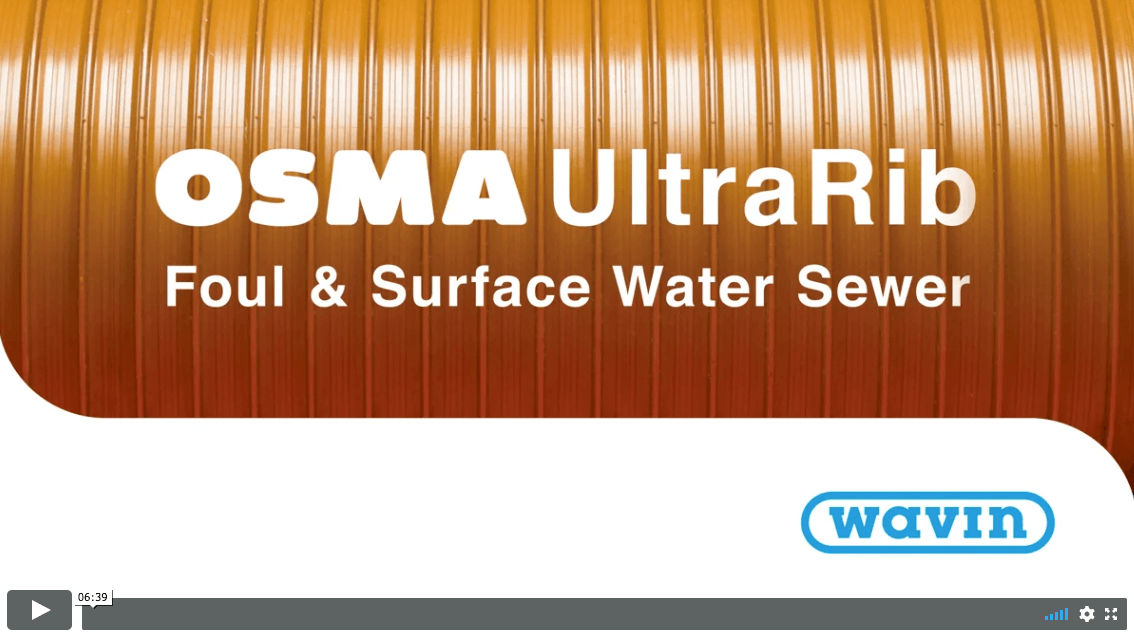
Osma UltraRib Installation in Adoptable Applications
Introduction
This informative e-learning module will take you through the steps required to install Osma UltraRib in adoptable applications whilst adhering to the latest regulations including the new Design Construction Guidance for England.
Chapters
Step 1: Storage & Handling
This chapter will take you through the best practices on site in regards to storing and handling Osma Ultrarib pipe and fittings ensuring you always follow site standard safety procedures.
Step 2: Excavation
Excavation should always be carried out in accordance with BS EN 1610, BS 8000 Part 14 and the Design Construction Guidance. This chapter will give advice on excavation, trench boxes and minimum trench widths for Osma UltraRib for both singular or multiple pipe installations.
Step 3: Bedding
Advice will be given on the type of aggregate used and the particle size depending on the pipe diameter. We will also look at the minimum bedding depths needed and how it should be compressed at each layer.
Step 4: Cutting, Jointing and Laying the Pipe
This chapter will look at how Osma UltraRib pipe should be cut, cleaned and joined together with a ringseal, as well as information regarding maximum pipe lengths in adoptable applications.
Step 5: Sidefill and Backfill
We will look at how to install the side and backfill with aggregate in layers for Osma UltraRib pipes followed by advice on the final backfill to bring the level up to the surface formation. We will also look at installing a concrete slab in adoptable situations where loading is expected and the cover is less than 1.2 metres.
Step 6: Cleaning and Testing
Information will be given at how cleaning and testing must be carried out in the pipe system for different areas of the UK according to different regulations.
Hepworth Clay
| 30 |
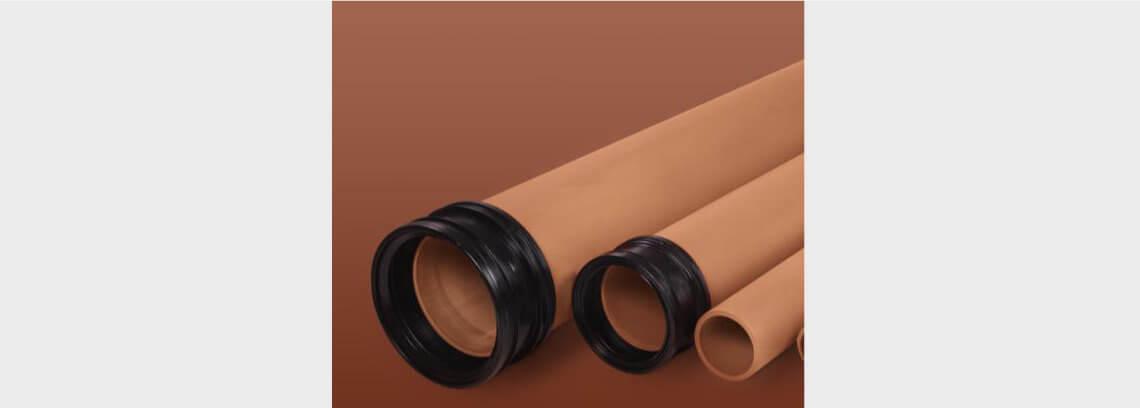
Preview
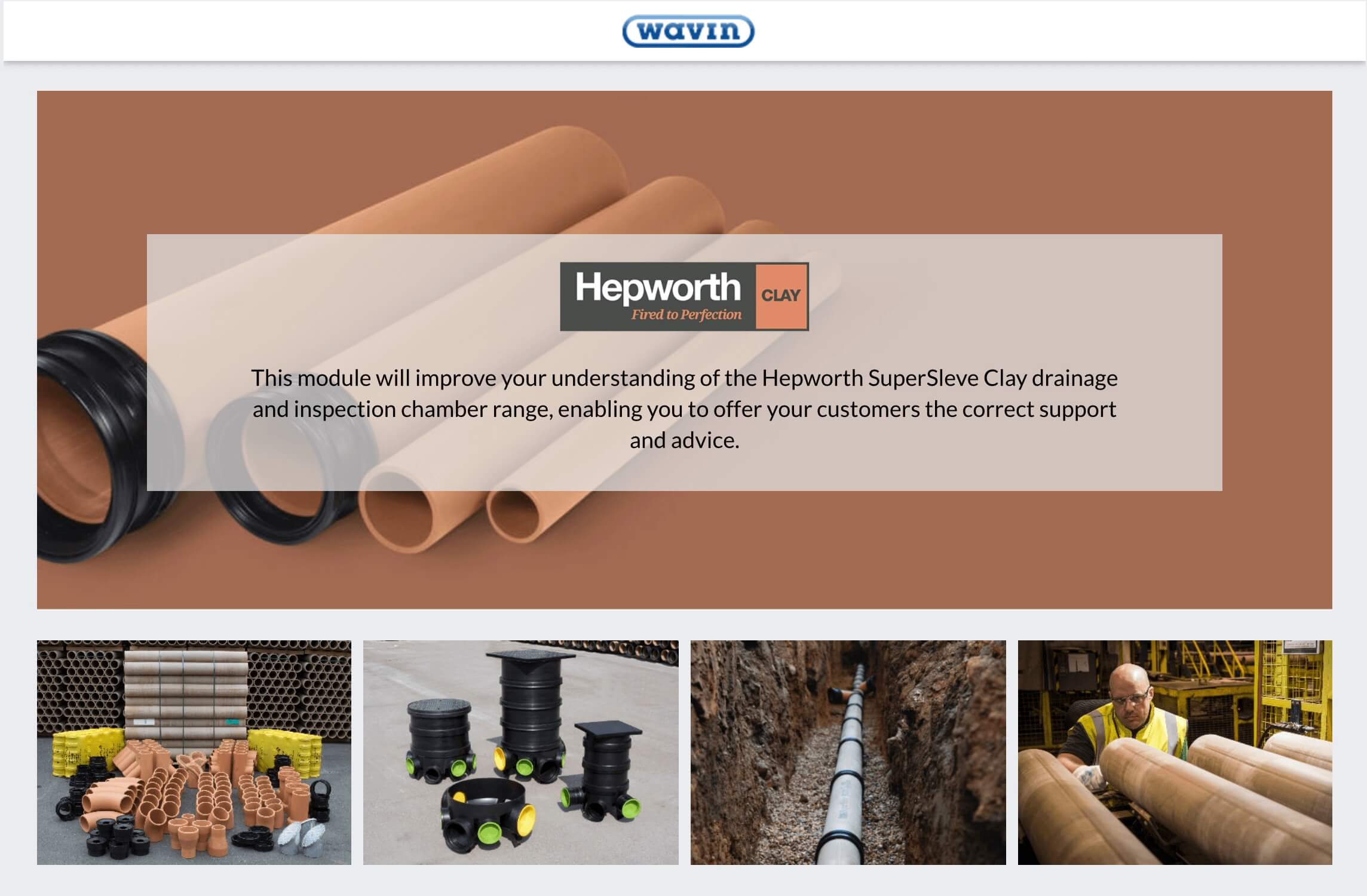
Hepworth Clay
Introduction
Hepworth clay is a sustainable, durable, cost efficient and high performance drainage system. This e-learning course will cover its use and installation.
Chapters:
Chapter 1 - Hepworth Clay SuperSleve
The first chapter of the course will cover the Hepworth Clay Supersleve and introduce its key features, advantages and benefits.
Chapter 2 - Hepworth Inspection Chambers
Chapter 2 gives an overview of Hepworth Inspection chambers and guidance on how to select the most appropriate chamber for different applications including the implications of building regulations.
Chapter 3 – Installation
This chapter will provide you with information on how to install Hepworth inspection chambers including pipe cutting, jointing, delivery, storage, handling and pipe pack dismantling.
Assessment – test your knowledge
This training courses finishes with a short assessment which allows you to check your understanding of the training material.
OsmaDrain
| NA |

Preview
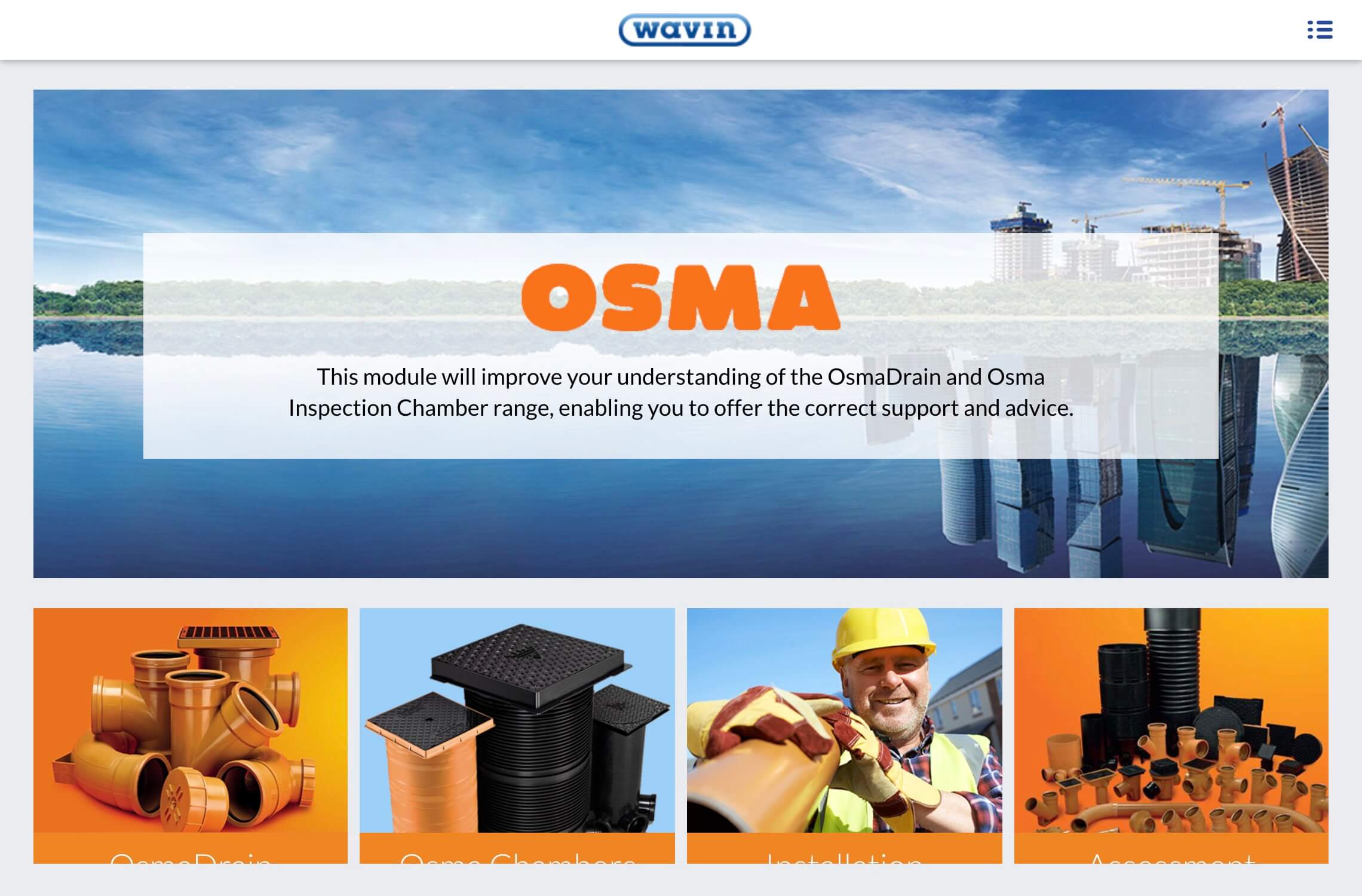
Osmadrain
Introduction
This intermediate level module is designed to improve your understanding of the OsmaDrain and Osma Inspection Chamber ranges and how they should be installed.
Chapters:
Chapter 1 - Introduction to OsmaDrain
This chapter highlights the features and benefits of the OsmaDrain range and the approvals and standards. It also explains how part H of the building regulations for non adoptable drainage installations apply to OsmaDrain. It also includes guidelines for layouts and which pipe diameters to use.
Chapter 2 - Introduction to Osma Inspection chambers
Chapter 2 covers the Osma inspection chambers. It explains the features and benefits of the range how to select and install an Osma inspection chamber, relevant standards and building regulations.
Chapter 3 – Below ground drainage installation
This chapter explains how to install the Osma below ground drainage including how to cut pipe and connect the push fittings and finally how to transport, handle and store the pipes and fittings.
Assessment
This interactive section will allow you to test your knowledge and understanding of the module.
Osma Rainwater
| 20 minutes |

Preview
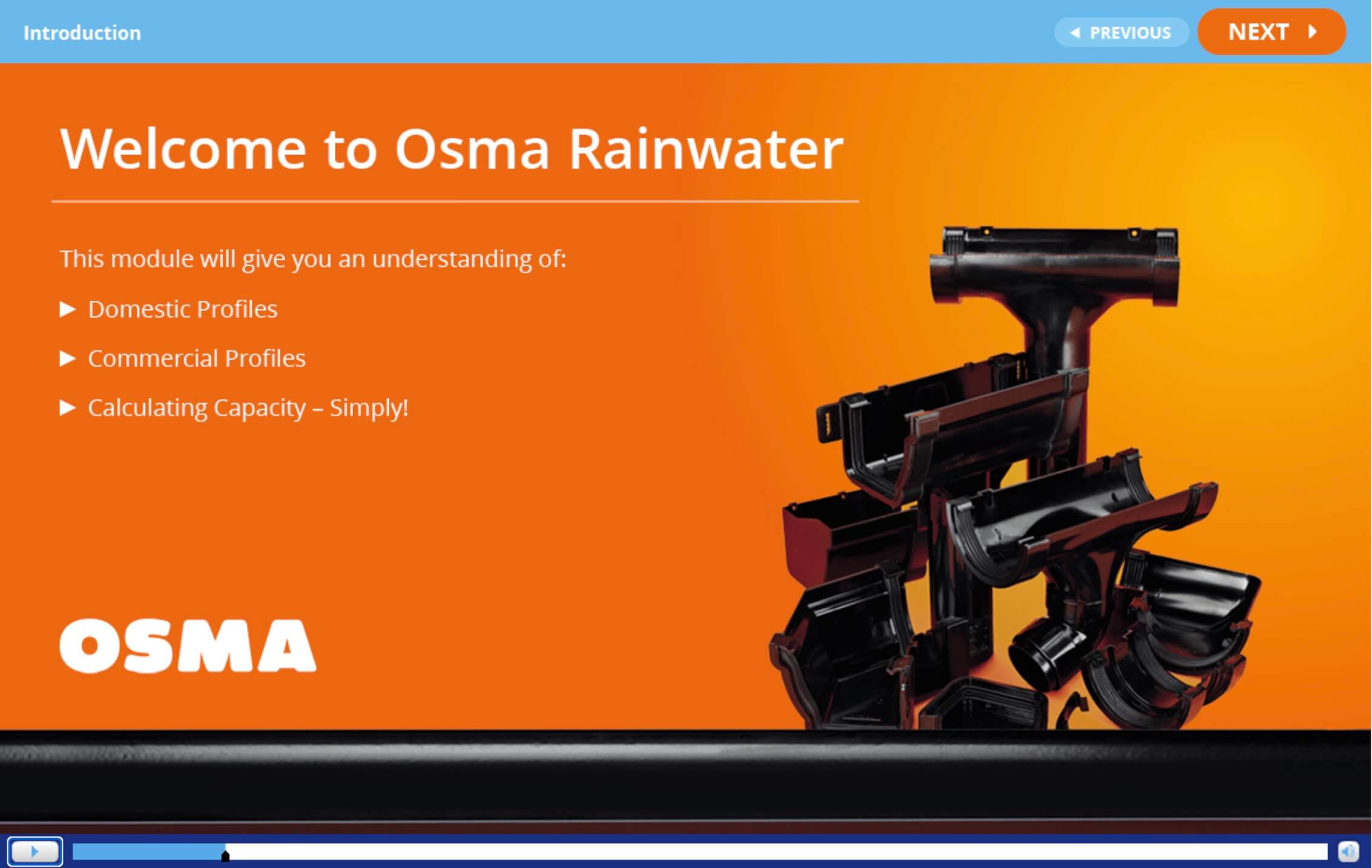
Osma Rainwater
Introduction
This module will give you a better understanding of the OSMA Rainwater portfolio of products, providing an overview of the range of domestic and commercial profiles, along with their features, benefits and unique designs. To help customers select the most appropriate profile, we’ll look at a simple method to calculate capacity and take a look at how easy they are to install.
Chapters
The Osma Rainwater range includes a variety of different gutter systems for a range of applications. This module will give you a better understanding of the OSMA Rainwater portfolio of products, providing an overview of features, benefits and installation guidelines.
Chapter 1 - Introduction to the purpose of a rainwater system
The first chapter of this online training course gives an introduction to rainwater systems and why they are needed.
Chapter 2 – Rainwater systems
The Osma Rainwater range includes commercial and domestic profiles each with its own unique design features. This chapter will familiarise you with each of the profiles.
Chapter 3 - Calculating capacity simply
This chapter will show you how to calculate system capacity using a simple method.
Chapter 4 – Installation
During chapter 4 you will be taken through the important considerations when installing an Osma Rainwater system including cutting, thermal expansion and use of flexiclips. It also highlights the key approvals for the product range.
Chapter 5 – assessment
Test your understanding of the contents of the module with just 10 questions.
Osma Soil & Waste
| 20 Minutes |

Preview
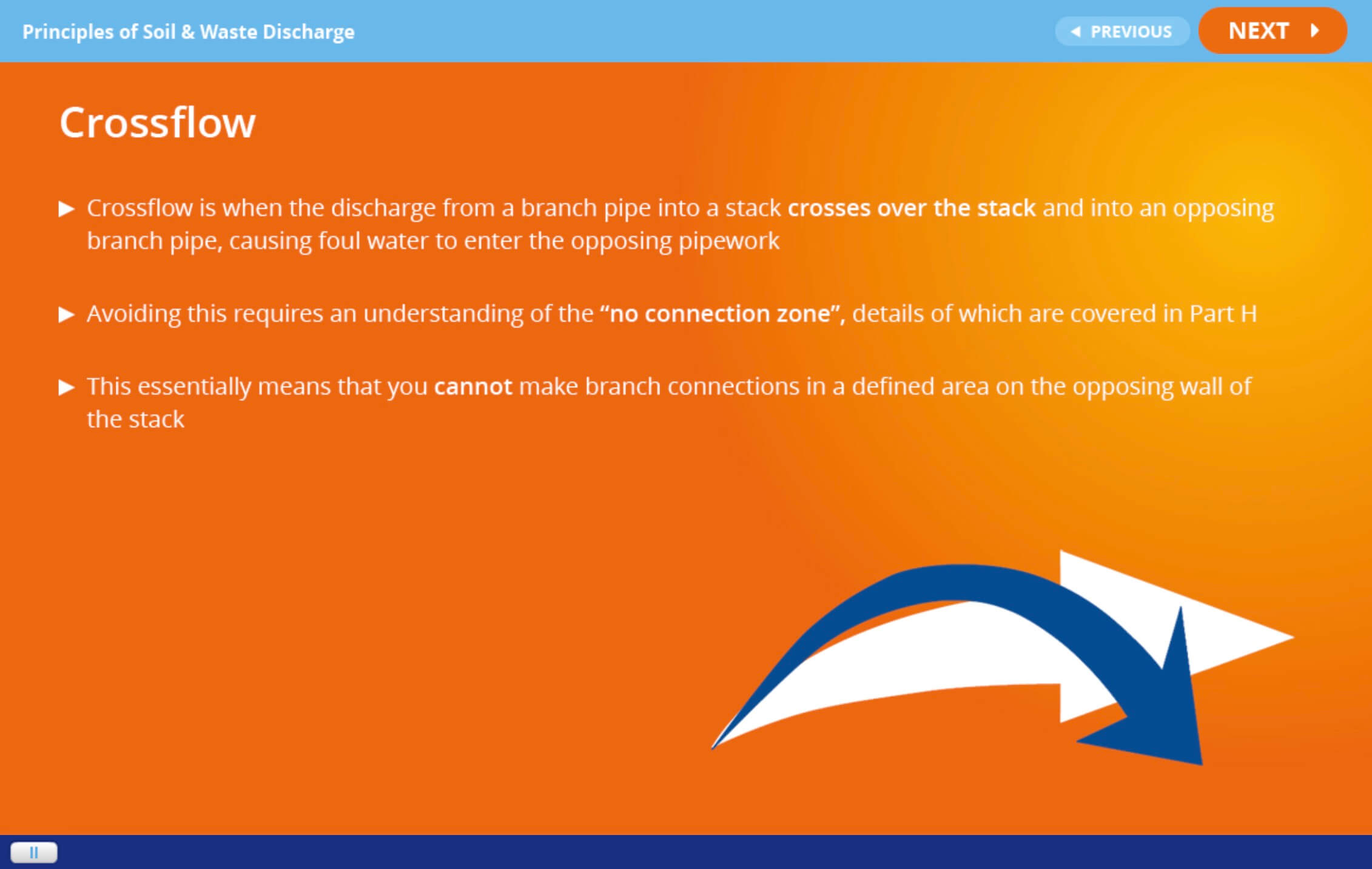
Osma Soil & Waste
Introduction
This course provides an introduction to Wavin's Osma drainage products, covering:
- The principles of soil and waste
- Complying with Building Regulations
- Unique features of the Osma range
Chapters:
Chapter 1 - Introduction to Osma Soil and Waste
This intermediate level course will give an overview of the principles of soil and waste along with some of the unique features in the Osma range and how the building regulations apply. It will outline the basic anatomy of branch pipework and stacks.
Chapter 2 – Principles of soil and waste discharge
In this chapter you will find further information on the requirements for connection of soil and waste to below ground drainage including the ‘no connection zone’, the use of soil manifolds, condensate discharge and traps as set out by part H of the building regulations.
Chapter 3 – Installation
Find out about the jointing systems of the Osma soil and waste systems and their benefits. This chapter also outlines how to make a solvent welded, push-fit and ring seal joints and the requirement for branch ventilation. Finally you will find out about the full range of Osma soil and waste and the materials that they are made from.
Assessment
This interactive section will allow you to test your knowledge and understanding of the module. here are 10 questions in this section and we estimate that it will take about 10 minutes to complete.

Preview
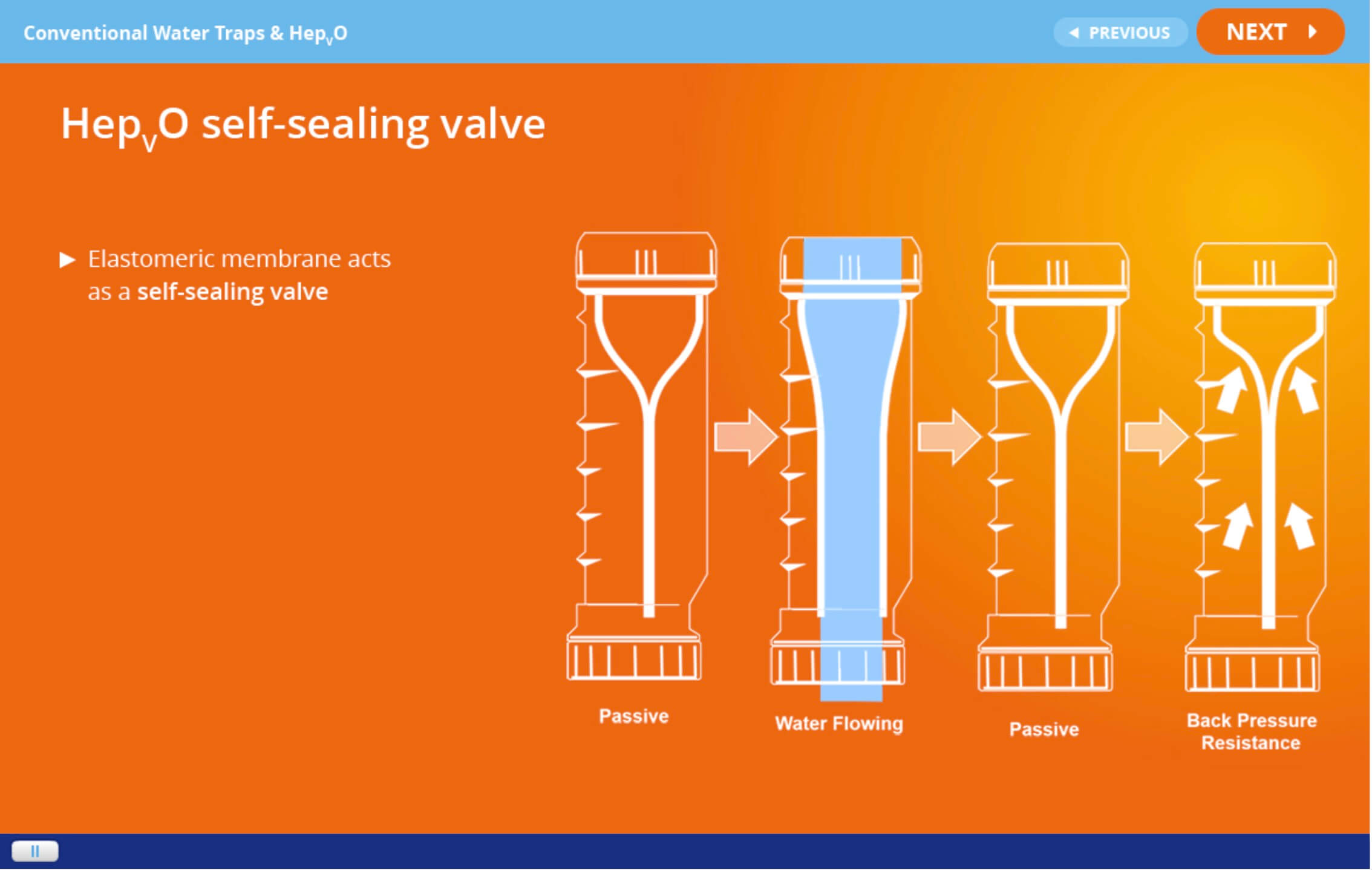
HepvO self-sealing valve
Introduction
This course provides an introduction to Wavin's innovative waterless trap, HepvO, and covers:
- How HepvO works
- Where HepvO can be used
- How HepvO compares to conventional water traps
- Installation guidelines
Chapters:
Chapter 1 - Introduction to HepvO
HepvO is a self-sealing waterless waste valve. This chapter will introduce how the valve works, outline how it compares to conventional traps and explain the applications in which it is most beneficial.
Chapter 2 – conventional water traps and HepvO
This chapter takes a look at how traditional water traps work and how HepvO compares.
Chapter 3 – Installation and standards
This chapter will show you how HepvO should be installed and the key standards that apply.
Assessment
Complete these 10 questions to ensure your full understanding of the HepvO self sealing valve training.
Hep2O | Push-fit plumbing products
| 30 Minutes |
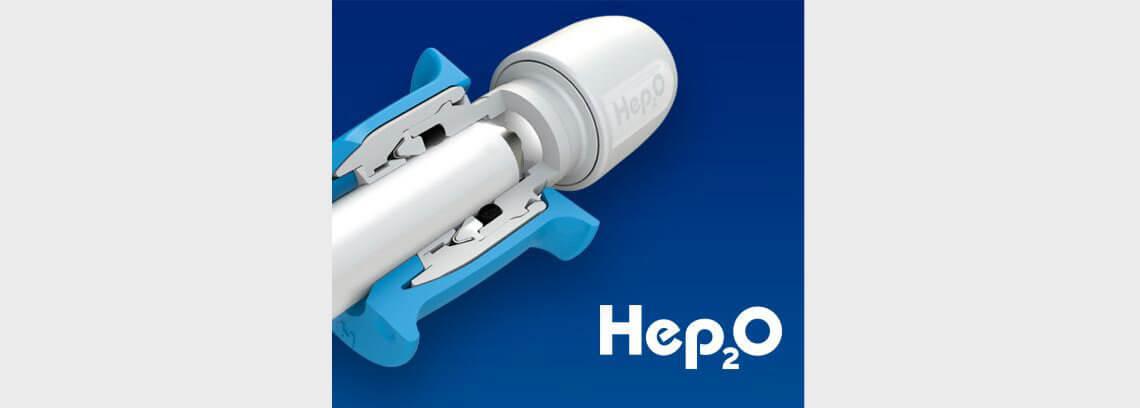
Hep2O | Push-fit plumbing products
Introduction
This course provides an overview of our Hep2O push-fit plumbing system and covers:
- How Hep2O works
- Our unique In4Sure joint recognition
- How Hep2O compares to copper pipe systems
This beginner level course will take about 30 minutes to complete and will show you how to install Hep2O as well as outlining its key features and benefits and showing how it compares to other products on the market.
Chapters:
Chapter 1 – What is Hep2O
This chapter covers the evolution of Hep2O, its installation and unique benefits to installers and home owners.
Chapter 2 – how Hep2O works
Chapter 2 covers some of the unique features of Hep2O including the unique iIn4Sure joint recognition and the HepKey. It also includes a comparison with copper and explains the compatibility of the two systems.
Assessment
We estimate that it will take just 5 minutes for you to complete this quick 10 question assessment to check knowledge and understanding of this module.